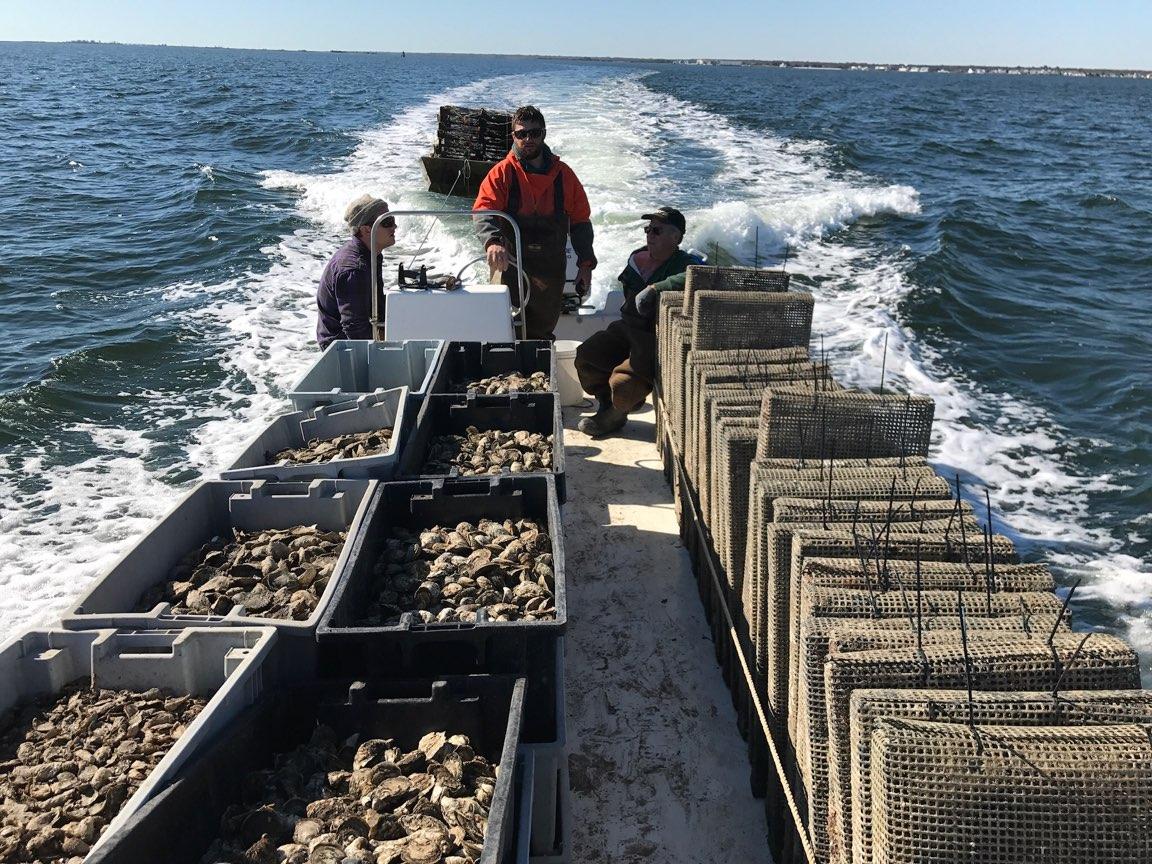For months covid-19 restrictions have shut down restaurants in New Jersey and stalled the promising rebirth of the state’s oyster industry.
That left a lot of now-oversized oysters in Delaware and Barnegat bays. A new project led by Rutgers University and New Jersey Sea Grant is buying 76,000 oysters from growers for transplant on Delaware beds and Atlantic coast oyster restoration sites in Little Egg Harbor and the Mullica River.
Moving those older oysters should increase the biomass and oyster larvae in the water – and could serve as a demonstration of how to bring more commercial oyster growers into ecosystem restoration programs.
“These older oysters are at an ideal reproductive age. It seemed like an ideal opportunity,” said Lisa Calvo, a marine scientist and aquaculture program coordinator at Rutgers University – New Brunswick’s Haskin Shellfish Research Laboratory and New Jersey Sea Grant.
The idea has been kicking around the aquaculture and coastal science community for some time, says Calvo, who hopes the transplanting “will serve as a model for future efforts and establish a shellfish exchange that will serve as a broker linking shellfish farmers and restoration practitioners.”
A $70,000 grant to the Haskins lab from the NOAA Sea Grant COVID-19 Rapid Response Aquaculture Funding Opportunity is funding the project, with most of the money paying growers $0.65 per oyster.
Those are oysters grown too large for market, left behind as markets shut down and growers’ inventories backed up. Depending on the site where they have been grown, they range in age; most are second-year oysters, at least three inches in length, said Calvo.
Buying up those oysters is only a small assistance. Despite determined efforts to expand alternate markets and direct consumer sales, growers still face the dilemma of what to do with the 2020 harvest and prepare for next year’s.
“The funding isn’t huge, it’s not going to make people whole by any means,” said Calvo.
The oysters will be transplanted within the Delaware and coastal regions where they were grown over the next two weeks, with all complete by Oct. 1.
One receiving site is the Tuckerton Reef, a no-harvest restoration site in Little Egg Harbor planted by growers Parsons Mariculture in cooperation with Stockton University. The two-acre site has been planted with more than 3 million oyster spat and hundreds of bushels of recycled shells from area restaurants since 2016.
It should be ideal for monitoring how newly transplanted adult oysters perform, said Calvo.
So far “the results are encouraging in that a lot of it has been living for four years,” said Steve Evert, director of the Stockton marine field station at nearby Nacote Creek. “We have it very well mapped, we know where we’ve put everything over the years.”
The Tuckerton Reef will get 75 bushels of new oysters with the transplanting, to be scattered over between one-tenth and one-quarter of an acre of bottom, said Evert.
“We’ll have the ability to monitor that with sonar and GPS” to measure how the new oysters do, he said. “That’s some of the information that will help Lisa.”
Building that baseline of performance data is important now to the reef restoration organizers, who have hopes of using Parsons’ spat-on-shell remote setting methods to bring oysters back permanently to the bays.
“That’s what it will take for us to apply for major funding,” said Evert.
Ravaged for decades by the oyster diseases MSX and dermo, New Jersey oysters were re-established with Rutgers researchers developing disease-resistant varieties, and both traditional baymen and new shellfish aquaculture growers using those to build their operations and markets.
At the same time shellfish have become valued again for “ecosystem services” – their role in filtering bay water, and as reefs providing habitat for finfish and other species.
The Tuckerton Reef got its start in 2016 with an investment from the Barnegat Bay Partnership that provided 150 bushels of spat on shell and 150 bushels of oysters from the nearby Mullica River.
Other partners in the new transplant program include the state Department of Environmental Protection, Stockton University, the Barnegat Bay and Delaware Bay partnerships, the Pew Charitable Trusts and New Jersey Aquaculture Association.
Calvo says the effort came together remarkably fast after the National Sea Grant program in early May put out its request for proposals for covid-19 aid, and the New Jersey effort began taking shape by July.
In the future, aquaculture advocates say more shellfish growers can play a part in restoring the estuaries in their regions, a role that will benefit them in both public awareness of local food and the environmental value of raising shellfish.
For even small operators, it could be as simple as systems that credit growers for donating their older stock and culls for replanting on restoration sites, said Calvo. She envisions restoration work as “a little piece in a grower’s portfolio.”







